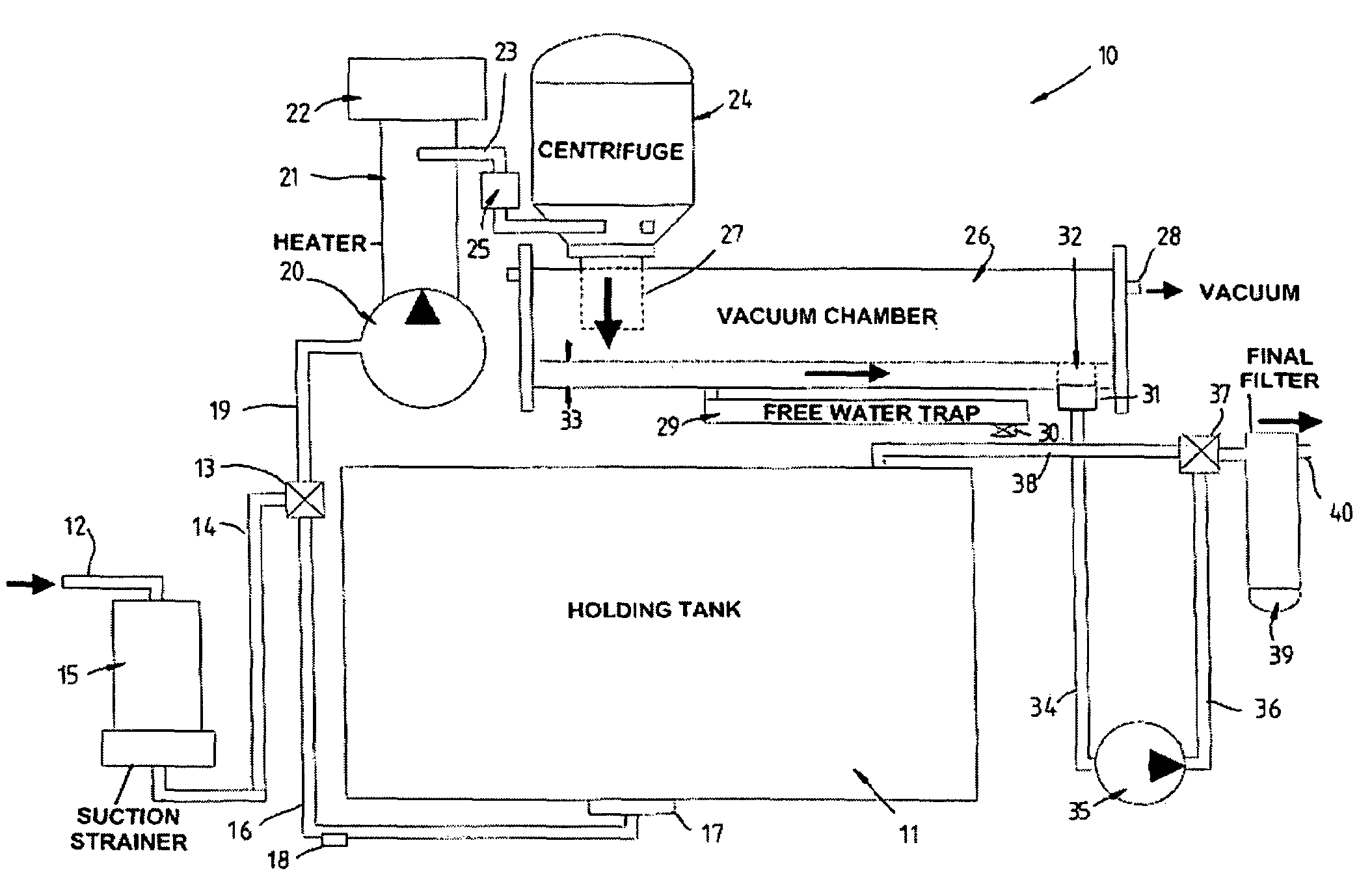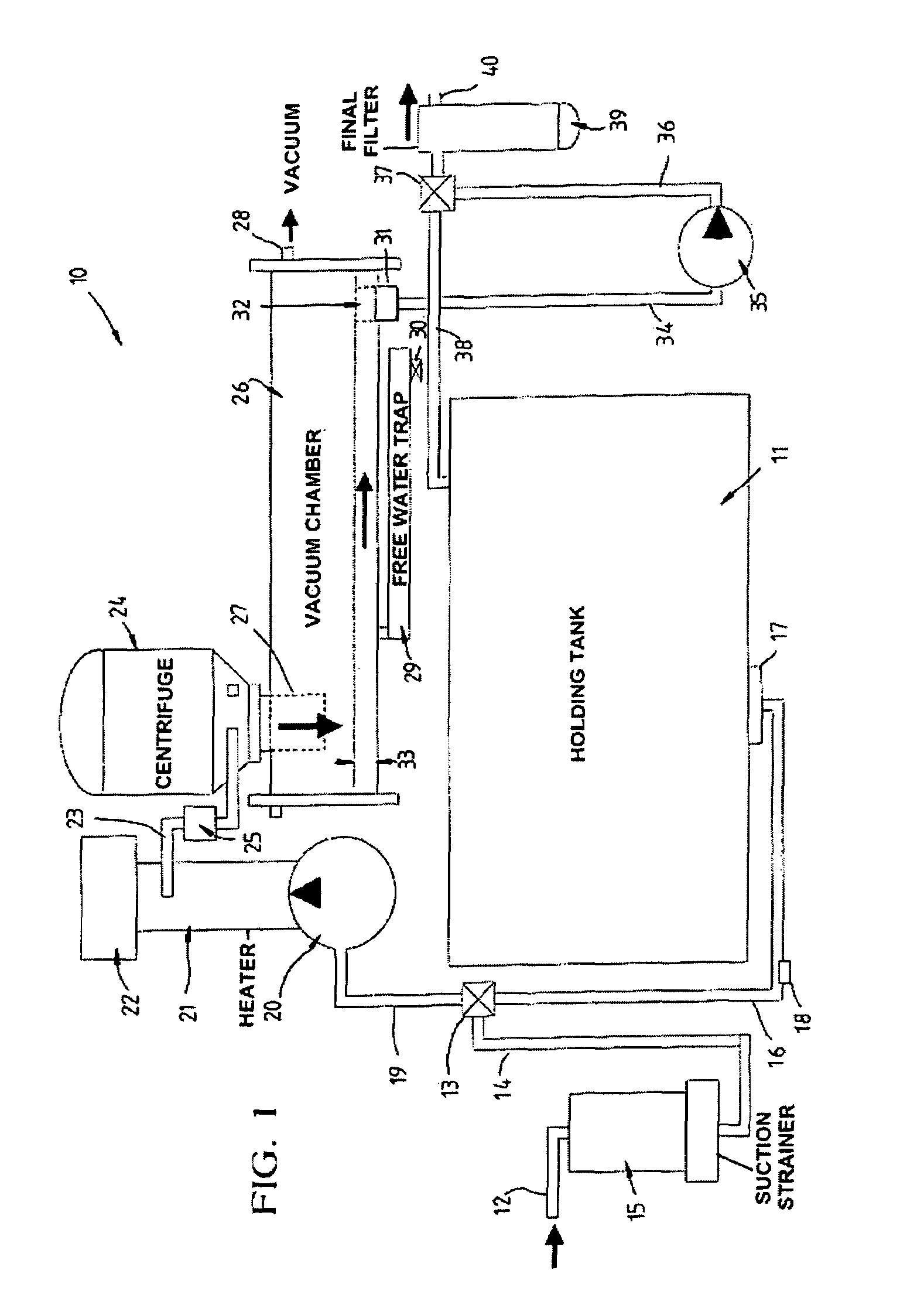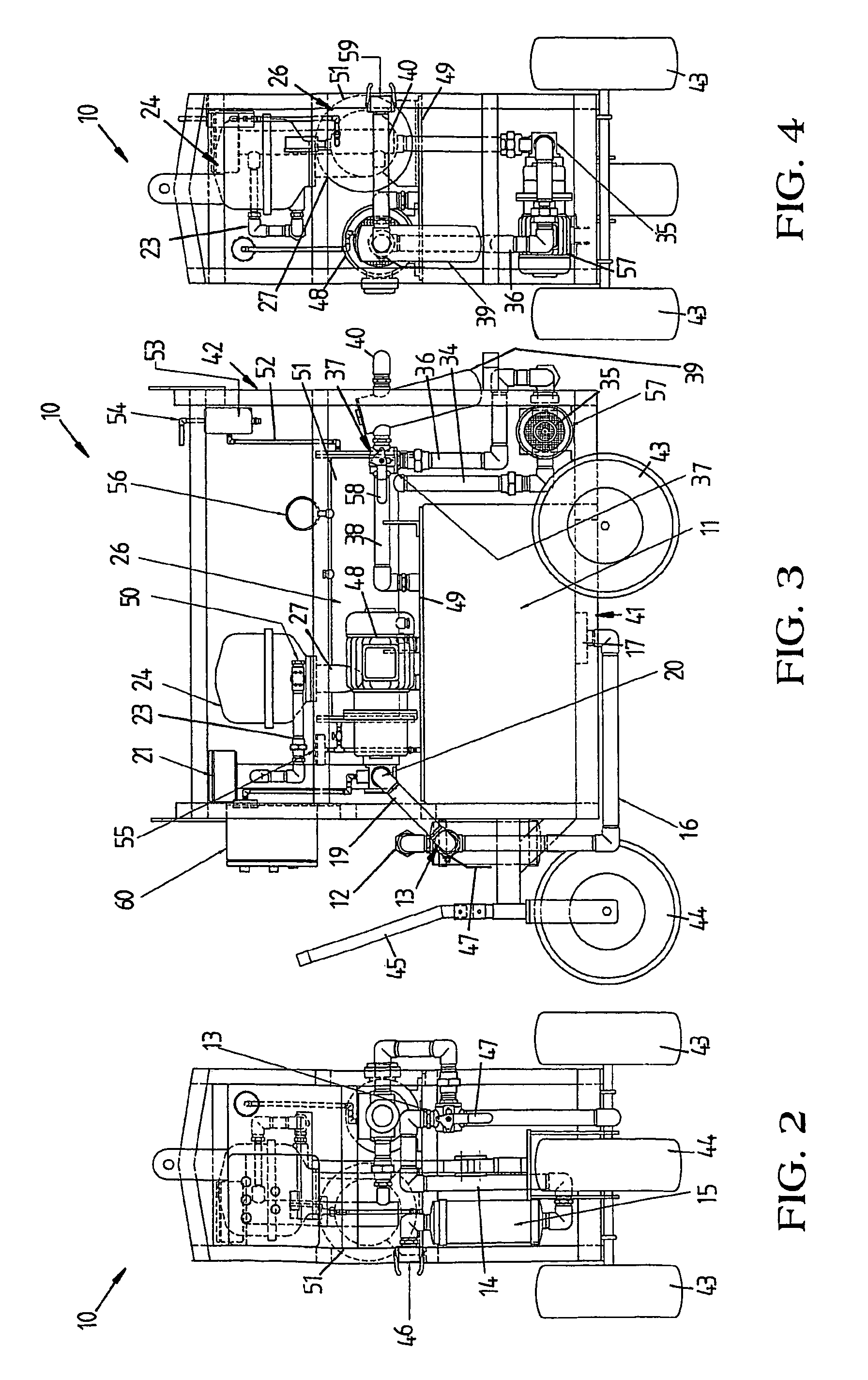Apparatus for cleaning contaminated oil
a technology for cleaning apparatus and oil, applied in the direction of electrostatic cleaning, cleaning process and apparatus, centrifuges, etc., can solve the problems of oil being contaminated by other substances or materials, oil being contaminated by water or moisture, and losing lubrication integrity
- Summary
- Abstract
- Description
- Claims
- Application Information
AI Technical Summary
Benefits of technology
Problems solved by technology
Method used
Image
Examples
Embodiment Construction
[0044]Referring to the drawings and firstly to FIG. 1, there is illustrated schematically oil cleaning apparatus 10 according to an embodiment of the invention, the apparatus being adapted to clean either oil held within a holding tank 11 or oil supplied from an inlet pipe 12 which may be connected to an external source. A three way selector valve 13 is connected to the inlet 12 though a pipe line 14 via a suction strainer 15 which will remove larger particles and contaminants down to 25 μm size. The three way selector valve 13 is also connected to the holding tank 11 via piping 16 to a suction sump 17 located in a lower portion of the holding tank 11. The piping 16 includes a drain plug 18 which allows drainage of oil from the tank 11.
[0045]The outlet side of the valve 13 is connected by pipeline 19 to the inlet of a first pump 20 directly coupled to, to be driven by, an electric drive motor. The outlet of the pump 20 is coupled to an in-line heater 21 which has a thermostat and sw...
PUM
| Property | Measurement | Unit |
|---|---|---|
| size | aaaaa | aaaaa |
| pressure | aaaaa | aaaaa |
| pressure | aaaaa | aaaaa |
Abstract
Description
Claims
Application Information
 Login to View More
Login to View More - R&D
- Intellectual Property
- Life Sciences
- Materials
- Tech Scout
- Unparalleled Data Quality
- Higher Quality Content
- 60% Fewer Hallucinations
Browse by: Latest US Patents, China's latest patents, Technical Efficacy Thesaurus, Application Domain, Technology Topic, Popular Technical Reports.
© 2025 PatSnap. All rights reserved.Legal|Privacy policy|Modern Slavery Act Transparency Statement|Sitemap|About US| Contact US: help@patsnap.com



